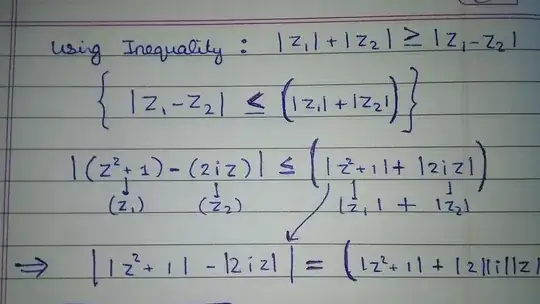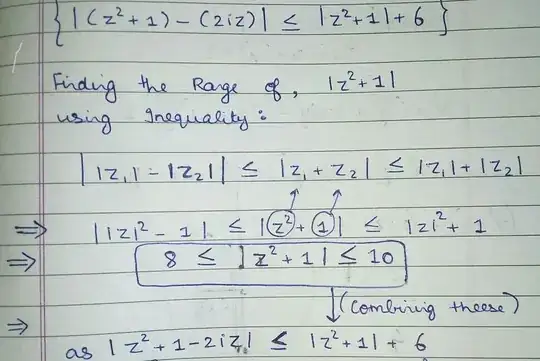Problem:
How do you find the maximum value of $|z^2 - 2iz+1|$ given that $|z|=3$, using triangle inequality?
My attempt:
$$|z^2 - 2iz+1|\le|z|^2+2|i||z|+1$$
$$\implies |z^2 - 2iz+1|\le16$$
However, this does not provide a strict upper bound on the inequality, where the equality holds.
I also tried writing it as:
$$|(z-i)^2 + 2| <= |(z-i)|^2 + 2$$ This last equation does suggest that the maximum value occurs at $-3i$, however, provides an even higher upper bound of $18$.
Wolfram Alpha gives the answer as $14$, and it occurs as $-3i$. I know that the equality only holds when all the complex numbers are collinear, but that has not helped me with this question.

